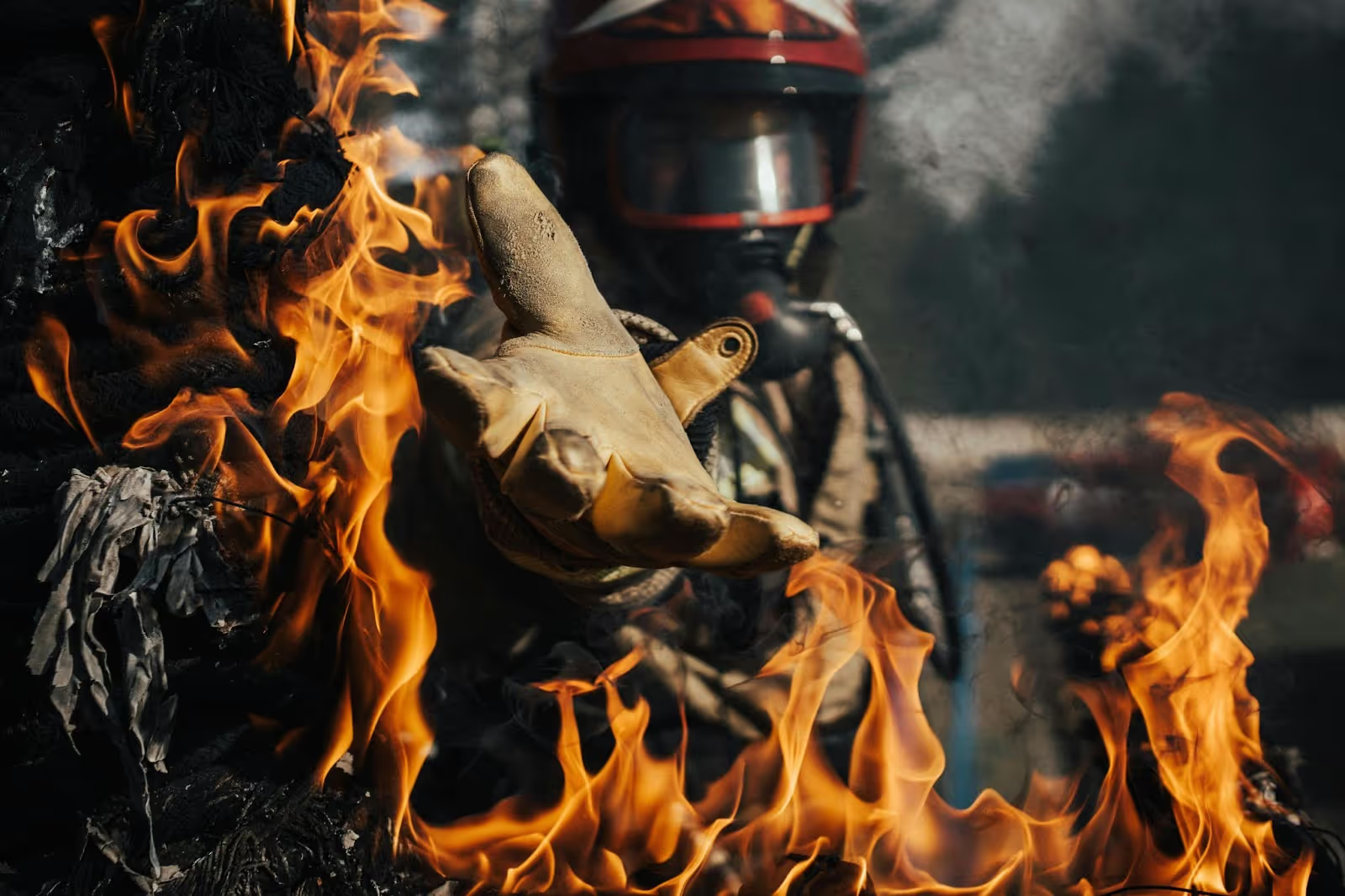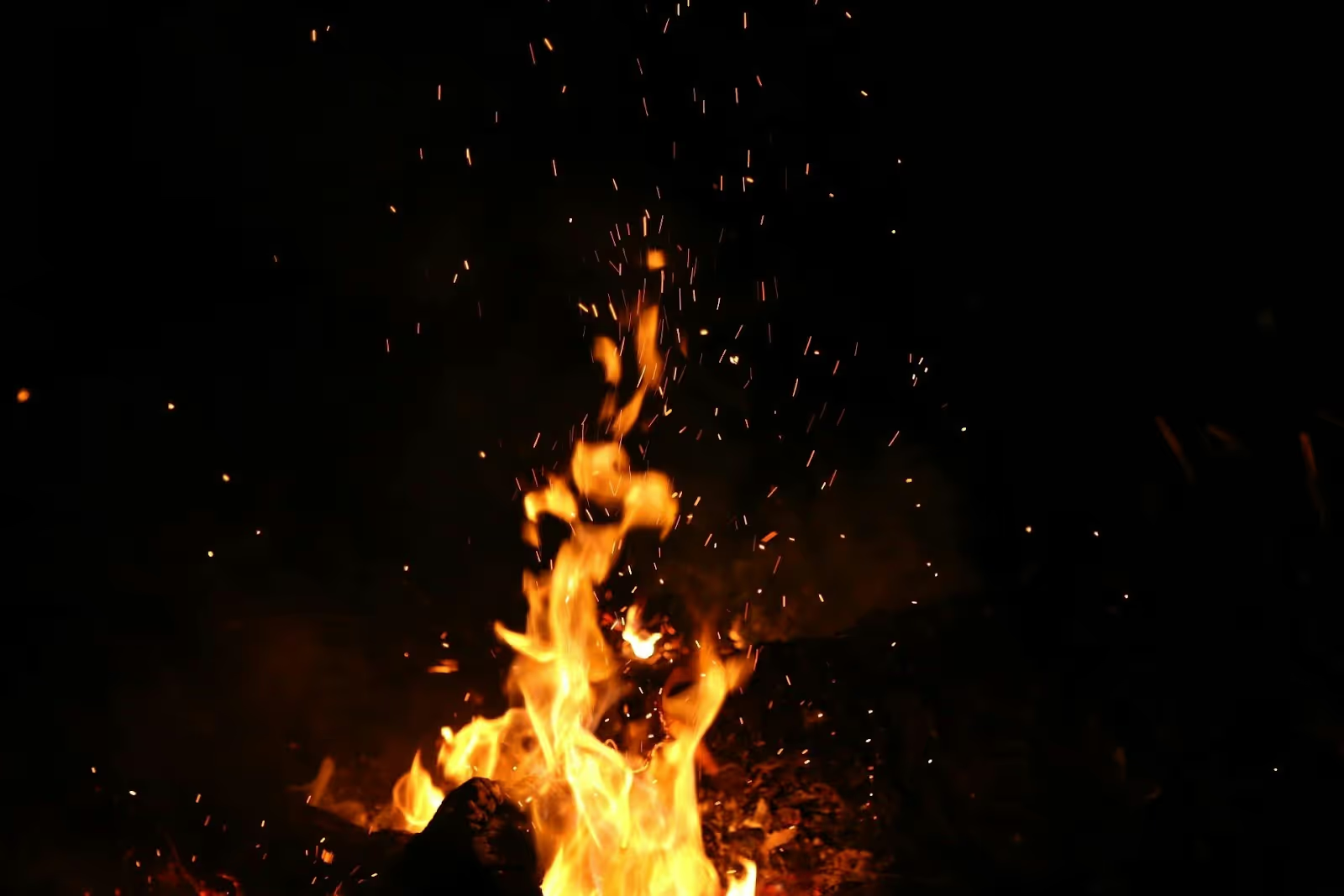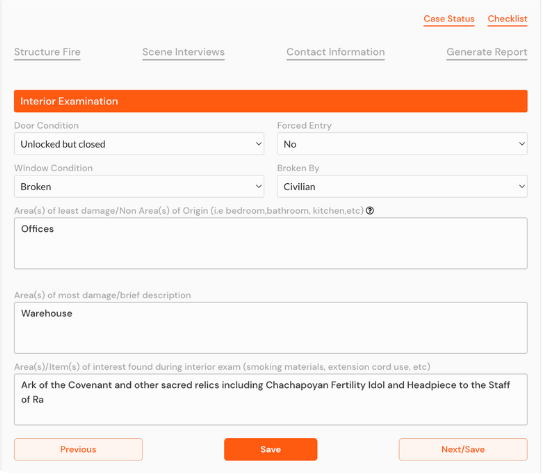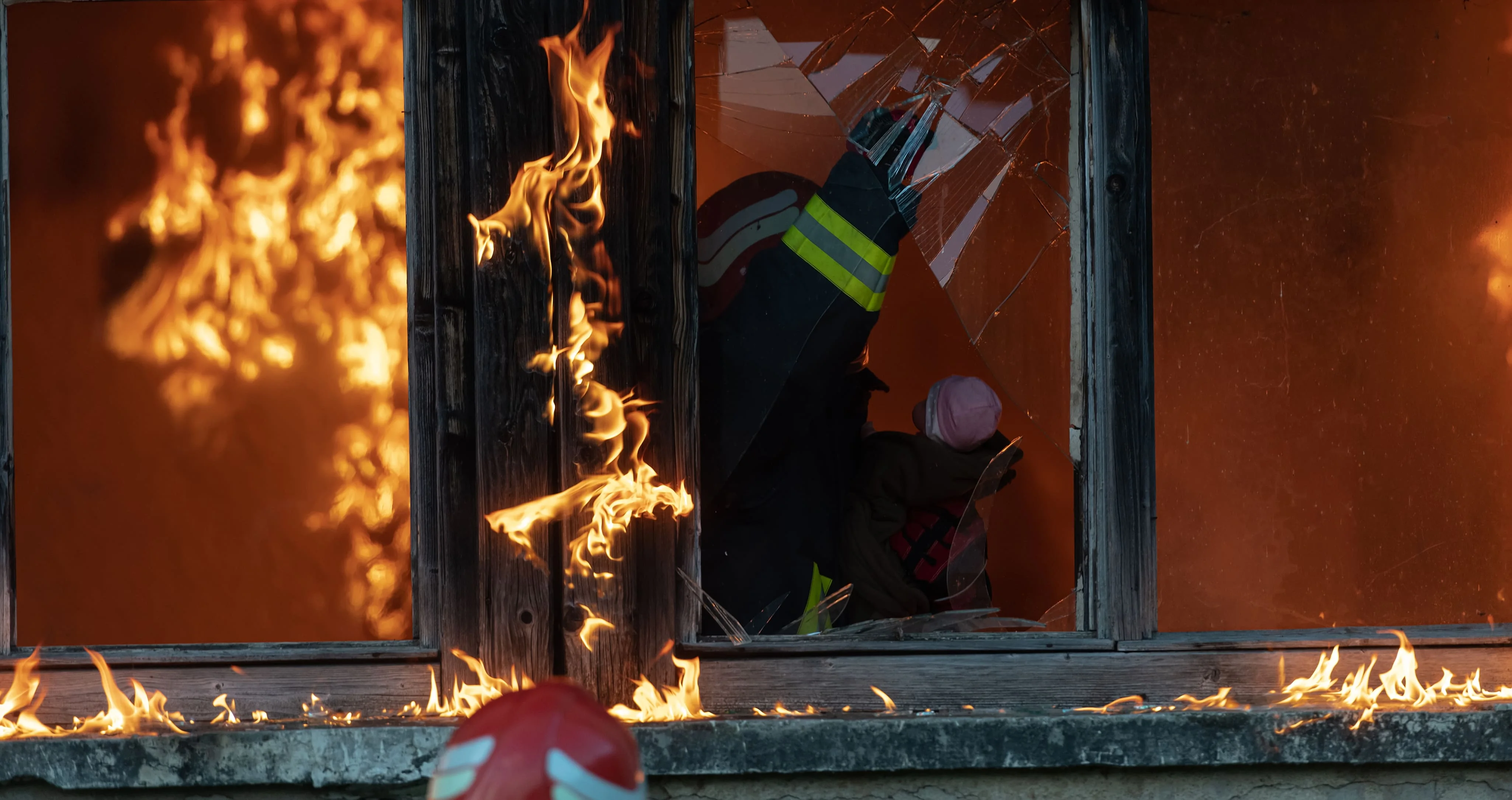Mastering Fire Investigation Procedures & Techniques: A Comprehensive Guide


Each fire tells a story of loss, tragedy, or sometimes even death. Fire investigation is a complex field that includes science, intuition, and compassion. It involves determining the fire's origin, cause, and spread, which requires knowledge of fire behavior, chemistry, physics, and investigative techniques and procedures.
From our understanding of fire science, we cover all fire investigation procedures and techniques you need to know. It's not just about determining the cause of a fire; it's about preventing future tragedies.
Whether you're a professional looking to enhance your skills or a newcomer interested in fire investigation, this guide is structured to offer valuable insights into becoming proficient in this critical field.
Table of Contents
TL;DR
Fire investigation is essential for several reasons. Knowledge of fire is not just academic; it's practical, enabling investigators to interpret the clues left behind by fire. Fire investigators are also scientists; they are responsible for conducting the investigation and determining the cause of the fire.
A Bachelor's in fire science gives you a strong foundation in fire behavior, fire protection systems, and fire investigation principles.
Fire Investigation Courses: Numerous fire investigation courses are available through fire departments, online platforms, and training organizations.
National Fire Protection Association (NFPA): The NFPA is a global authority on fire safety and offers a wealth of resources for fire investigators, including publications, training programs, and certification opportunities. Their website provides access to fire codes and standards, research reports, and educational materials like:
- NFPA 921 Guide for Fire and Explosion Investigations
- NFPA 1033 Standard for Professional Competence of Fire Investigators

Fire dynamics, a fundamental aspect of fire investigation, is the scientific study of how fires start, grow, and spread.
The Fire Tetrahedron is a visual representation of the four elements essential for a fire to exist and sustain itself. It comprises four essential components: fuel, heat, oxygen, and chemical reactions.
- Without fuel, the fire cannot sustain itself
- Without heat, ignition cannot occur
- Without oxygen, combustion is inhibited
Chemical Reaction (Combustion): When the first three elements (fuel, heat, and oxidizer) come together in the right proportions, a self-sustaining chemical reaction called combustion occurs. This reaction releases heat and light, creating the flames and smoke we associate with fire.
Four stages of fire development:
Fire behavior varies throughout its different phases. Investigators must be aware of changes in behavior. Understanding the four stages is critical for fire investigators to accurately determine the fire investigating techniques, origin, and cause of a fire, ensure safety during investigations, and collect relevant evidence. Here, we briefly take a look at the four phases of fire.
1. Ignition Phase:
- The initial stage is when the fire is just beginning. The fuel source is slowly heating up, reaching its ignition point due to the presence of heat.
2. Growth Stage:
- Once ignited, the fire starts to grow. The heat generated by the burning fuel further increases the surrounding temperature, igniting more fuel.
- Flames have become more prominent and more visible, with increased smoke production.
3. Fully Developed Stage:
- This stage represents the peak intensity of the fire.
- This stage is difficult for firefighters due to extreme temperatures and potential structural breakdown.
4. Decay Stage :
- As the fire consumes available fuel, it starts to die down.
This section will cover how to read and analyze burn patterns, char marks, and other fire-induced changes in a structure or environment. Understanding these patterns helps investigators trace the fire back to its source, offering essential clues in the investigation process. Here, we discuss the science behind fire pattern analysis, including the factors influencing pattern formation and how they can lead to or mislead an investigation.
These are also known as burn patterns and are the visible or measurable changes left behind by a fire.
To effectively read and analyze burn patterns, char marks, and other fire-induced changes in a structure or environment, fire investigators must:
- Survey the scene,
- Identifying burn patterns
- Identifying char marks
They provide evidence about the fire's origin, path, and intensity. They should examine structural changes and consider environmental factors that may have influenced fire behavior.
Correct fire pattern analysis and determination of the origin depends on the correct interpretation of the fire patterns, which can be extremely difficult. By analyzing the direction, intensity, and distribution and using the best fire investigation technique, investigators can trace the fire path. Factors such as the complexity of fire dynamics, multiple ignition points, or multiple attempts to manipulate the scene can further complicate pattern analysis and increase the risk of misinterpretation. Therefore, thorough training, attention to detail, and collaboration with experts are essential to minimize the risk of misinterpretation.

When burned in fire, different materials respond in various ways due to variations in their composition and thermal properties. We will categorize materials as combustible materials, on-combustible, and synthetic materials and show their effects after burning:
By examining how materials react to heat and combustion, investigators can gather more precise data on fire behavior and characteristics. This also enhances their ability to conduct thorough smoke damage assessments, including the extent of smoke infiltration, smoke damage, and health hazards posed by toxic gasses released during combustion, thus using essential fire investigation techniques. The extent of damage to materials can also offer valuable information about the intensity and duration of the fire.
The legal framework and standards governing fire investigations are crucial for conducting valid and recognized investigations. Following these standards is essential for preserving the credibility of fire investigation procedures. NFPA 921 and NFPA 1033 a Guide to Fire and Explosion Investigations, stand for the National Fire Protection Association and provide a roadmap for scientific investigation methods. NFPA 921 is the most essential part of fire investigation practices, offering methodologies, techniques, and best practices guidelines. It covers various aspects of fire investigation, including scene examination, evidence collection, analysis, and the interpretation of fire patterns and behavior.
NFPA 1033 is for Professional Qualifications for Fire Investigators procedures. It outlines the minimum qualifications required for individuals to work as fire investigators. It establishes criteria for education, training, and experience, ensuring investigators possess the necessary knowledge and skills to conduct thorough investigations effectively.
The fire investigation procedure includes various steps, including scene examination, evidence collection, and analysis.
Evidence may comprise burn patterns, debris, and witness statements. Identifying potential items is the first step in evidence handling, which includes carefully collecting physical items, documents, and witness statements using appropriate techniques and arson investigation tools to prevent damage.
It includes written notes, photographs, or video recordings to thoroughly document each piece of evidence with its location and proof. To extract valuable information, submit the proof to qualified forensic laboratories and store it in a secure, controlled environment.
- To ensure accountability, maintain a transparent chain of custody for each piece of evidence, documenting all individuals who handle or transfer it. If necessary, present the proof effectively in court, providing clear documentation of its collection, handling, and analysis to support the investigation findings and conclusions.
- By performing these steps, fire investigators can ensure that evidence is handled systematically and professionally through proper fire investigation procedures and techniques.

Ethical principles in fire investigation are essential for professionalism throughout the process. Fire investigators must be honest about their profession and position and will not use their position for personal interest. Ethical investigators concentrate all their skills on securing the truth of the matter. The investigation must be unbiased and respect privacy and property rights. This ensures that conclusions are based on evidence.
These pre-fire investigation procedures involve several vital steps. Let's discuss them one by one:
Prior to the investigation, fire scene examination is the most critical aspect of fire investigation before taking any action. Scene safety should be prioritized because evidence safety and ensuring the well-being of investigators is also essential. At the beginning of any investigation, it is crucial to address potentially hazardous materials.
By implementing safety rules, investigators decrease the risk and create a secure environment for conducting examinations.
This process involves collecting essential details and data about the fire, including its location, time of occurrence, and any known circumstances or witnesses. By gathering this information before reaching the spot, investigators can gain insight into the incident's complexity.
Additionally, preliminary information involves reviewing relevant records and documentation, such as building plans, fire department reports, and witness statements. Communication with first responders is crucial to understanding the incident's initial conditions.
By creating a solid foundation of preliminary information, investigators can better understand their fire investigation procedures, identify critical areas of focus, and ensure that no important details are overlooked.
A systematic approach to fire investigation techniques, particularly in determining the origin and cause, is really important for ensuring accuracy and reliability in fire investigation procedures and techniques. This approach involves structured methodology and utilizing systematic techniques to gather, analyze, and interpret evidence effectively.
Within the fire scene examination, identifying the location where the fire originated is the origin determination of the fire. Investigators thoroughly examine the scene using fire investigation techniques such as documenting indicators like burn patterns and heat damage pinpoints to explore the point of origin.
Once the fire pattern analysis is done, the next step is cause determination, which involves identifying the factors that led to the ignition of the fire. Through systematic fire investigation procedures and techniques of the evidence, investigators can identify the most likely cause of the fire, such as electrical appliances, heating systems, cooking equipment, or human activities and availability of fuel and heat resources.
Scene documentation is essential in fire investigation procedures and techniques, providing valuable insights. By adequately documenting the scene, including photographs, sketches, and detailed notes, investigators can accurately set safety regulations for fire investigation techniques and safety measures.
Fire investigation procedures start with:
- Documenting scenes as soon as possible is safe, as the scene may change instantly.
- Record detailed observations of the scene.
- Take photographs from multiple angles.
- Collect physical evidence systematically using tools such as evidence bags and techniques to secure its integrity.
Implementing these fire investigation techniques and carefully prepared documentation, the scenes provide a visual record of the conditions and evidence present during the investigation. This documentation helps preserve the integrity of the evidence and ensures its acceptance in court.
Interviews with first responders can help investigators better understand the timeline of events. First responders can provide information about the circumstances surrounding the fire discovery, any actions taken to contain or extinguish the fire, and observations of any suspicious conditions at the scene.
Effective fire investigation procedures are essential for gathering accurate information during fire investigations and interviews. Here we discuss the most used techniques of interviews:
- Pay close attention to the interviewee's responses. Listen carefully to what they say and ask follow-up questions to clarify or expand their answers.
- For detailed information and responses, use open-ended questions to encourage interviewees to open up.
- Show empathy and understanding towards the interviewee's experiences and emotions. This can also put them at ease and encourage them to open up during the interview.
- Have a clear agenda and objectives so the interview stays focused. For this, plan the interview, outlining the topics or areas you want to cover.
Through evidence analysis, investigators seek to understand the pattern of fire investigation techniques and events leading up to the fire, the fire's behavior, and any factors that may have contributed to its ignition and spread. Evidence analysis is a critical component of a fire investigation, providing valuable insights into a fire incident's circumstances. By systematically analyzing and interpreting the evidence, investigators can find the reason behind the fire and contribute to fire prevention, safety in the future, and accountability efforts.
In fire investigation, forensic analysis is an integral part of evidence analysis. It provides scientific insights and evidence to support the investigative process.
Forensic analysis
It specifically focuses on the scientific analysis of physical evidence using specialized forensic techniques. It involves various types of analysis, including fire pattern analysis, chemical analysis, electrical analysis, and document examination. This analysis helps investigators interpret the evidence, identify potential ignition sources, fuels, accelerants, and contributing factors, and ultimately reach informed conclusions about the fire incident.
Forensic analysis of fire debris, electrical components, and other evidence in fire investigations involves various specialized techniques for gathering information.
Here are the types of forensic analysis commonly performed on every kind of evidence:
Overall, forensic analysis of fire debris, electrical components, and other evidence plays a significant role in fire investigation. Forensic laboratories also play an important step in fire investigation by conducting specialized analysis of physical evidence. These laboratories provide accurate analytical findings such as the presence of accelerants, chemical residues, or electrical faults. Smoke damage assessment is another crucial aspect of forensic analysis. By incorporating this, investigators can gain detailed insights into the impact of the fire and its potential consequences.
Hypothesis testing is the process of developing and evaluating possible explanations for how and why the fire started. Investigators generate hypotheses based on the evidence and observations gathered during the investigation, considering environmental factors. They then test these hypotheses against the available evidence, using logical reasoning, scientific principles, and investigative techniques to assess their credibility.
List of methods used to test hypotheses in fire investigation techniques:
- Experimental testing
- Evidence analysis
- Computer modeling and simulation
- Expert consultations
- Reconstruction
This process involves a continuous cycle of testing and analysis as new information becomes available. Due to the iterative nature of hypothesis testing, investigators refine hypotheses as new information becomes available, creating a more complex investigation process in fire investigation techniques. By continuously evaluating, integrating new information, and testing alternative scenarios, investigators increase the accuracy and credibility of their conclusions.
Writing a fire investigation report is the final step in the fire investigation procedure. After conducting examinations, collecting evidence, analyzing data, and drawing conclusions, compiling all this information into a detailed report requires a specialty in this field. It is essential to be clear and organized in writing that conveys the investigation results in a manner understandable to legal professionals and laypersons.
Effective fire investigation report writing begins with the following:
- Introduction: Provide background information on the case, its significance, and its objectives.
- Methodology: This section describes the methods used in the investigation, including the techniques, tools, and procedures used to collect and analyze evidence.
- Findings: Describe the evidence collected, observations made, and analysis conducted during the investigation.
- Analysis: Use logical reasoning and critical thinking to draw conclusions based on the available evidence.
- Conclusions: Concludes the critical findings of the investigation.
- Recommendations: Offer practical solutions and suggestions to address the root causes of the incident and decrease future risks.
- Documentation: Include relevant documentation to support the findings, such as photographs, diagrams, witness statements, forensic analysis results, and documentation of evidence collected.
- Appendices: Include any additional information.
By including these components in the fire investigation procedure, investigators can ensure that all relevant information is documented, organized, and presented clearly and concisely.
How BlazeStack Simplifies Case Management and Report Writing
Blazestack is a user-friendly platform that simplifies case management and report writing for fire investigation professionals. It contains features designed to increase efficiency and productivity for fire investigation procedures. These features simplify tasks such as:
- Offer customizable report templates.
- Provides a centralized platform for managing all aspects of fire investigation cases, including case documentation, evidence collection, witness interviews, etc
- It automates data entry processes, reducing manual data entry and minimizing the risk of errors.
- It integrates with forensic analysis tools and databases, allowing investigators to incorporate analytical findings and evidence into their reports directly.

- It facilitates collaboration among team members by enabling real-time sharing and review of case files and reports.
- BlazeStack offers mobile accessibility, allowing investigators to access case information, update reports, and capture evidence directly from the field using mobile devices.
Implementing these tasks increases BlazeStack's efficiency, accuracy, and collaboration, improving the effectiveness of fire investigation processes.
Legal testimony refers to statements or evidence a witness provides under oath during legal proceedings. Fire investigation report writing experts and witnesses are called upon to testify about their observations, findings, opinions, and conclusions related to the incident being investigated, which are then documented in the fire investigation report writing. Witnesses and experts must present their testimony honestly to legal standards and procedures, ensuring that the information presented in the report accurately reflects their testimony. It provides the court with valuable information that influences the hearing outcome.
The field of fire investigation is constantly improving, and competition is increasing, so dedication to continuous learning and professional development is essential. To stay current and practical, fire investigators must prioritize ongoing education and be aware of new trending improvements in this field.
Participation in fire field training exercises, mentorship, and actual investigations offers valuable benefits to individuals in the field of fire investigation. These trainings provide hands-on experience and practical skills development in the real world.
Trainees can get firsthand experience in evidence collection, scene examination, and documentation by changing fire scenes and investigation procedures. This experiential learning increases their ability to apply theoretical knowledge to practical situations and prepares them for the challenges in fire investigation.
Mentorship plays a significant role in professional development by providing guidance, support, and expertise from experienced professionals. Participation in actual investigations offers the best opportunity for trainees to apply their training and mentorship opportunities in real life. By actively participating in investigations under the guidance of experienced investigators, you gain exposure to fire case types, challenges, and investigative methodologies. These experiences provide you with the practical skills, knowledge, and confidence needed to excel in their roles as fire investigators and contribute to the safety and accountability of fire investigation practices.
Fire investigation encompasses various specialized areas, each with its challenges. There is no standardized, specialized area in fire investigation; it is a multidisciplinary field that ranges from expertise in training, experience, and interests.
These areas can include:
- Wildfire Investigation
- Fire Pattern Analysis
- Origin and Cause Determination
- Arson Investigation
- Electrical Fire Investigation
- Vehicle Fire Investigation
- Explosion Investigation
To become experts in these various field investigators, for example, wildfire investigators need an understanding of fire behavior, ecology, and environmental factors. In the case of vehicle fires, investigators must know about automotive systems, including engines, fuel systems, electrical components, and vehicle design.
Overall, Investigators also have strong analytical skills, attention to detail, and the ability to collaborate with other experts to uncover the reality behind these complex incidents.
Final Thoughts
Looking ahead, the field of fire investigation has the potential to make tremendous advances that will revolutionize investigative approaches. Artificial intelligence is one such technology, capable of analyzing vast databases to show intricate patterns and trends, supporting investigators in identifying important leads and insights. Furthermore, 3D printing technology provides a revolutionary method for simulating fire events with extreme precision, allowing for detailed analysis and visualization for greater comprehension.
While considerable progress has been achieved in recent years, particularly with the introduction of technology and complex data analytics, difficulties must still be overcome in fire investigations. Continuous research and development are required to address these issues and improve investigation techniques. Furthermore, there is an urgent need to incorporate these changes into the composition of fire investigation report writing, ensuring that findings are adequately documented and presented. By encouraging innovation and strengthening investigative procedures, we can better understand fire dynamics, reduce risks, and prevent future tragedies.
Trusted by Public and Private Investigator Teams Everywhere
Whether you're a big state agency, a small local fire department or somewhere in between, Blazestack software (NFPA 921® & CJIS compliant) collects fire scene data and generates standardized origin and cause reports in a fraction of the time of other methods.
To learn more about Blazestack, give us a call at (866) 303-4344 or email us at support@blazestack.com
Get Your Free 14-Day Trial and Custom Price Quote Now
We'll let Blazestack do the talking. Try it out right now for free.
A member of our staff will be in touch shortly.


